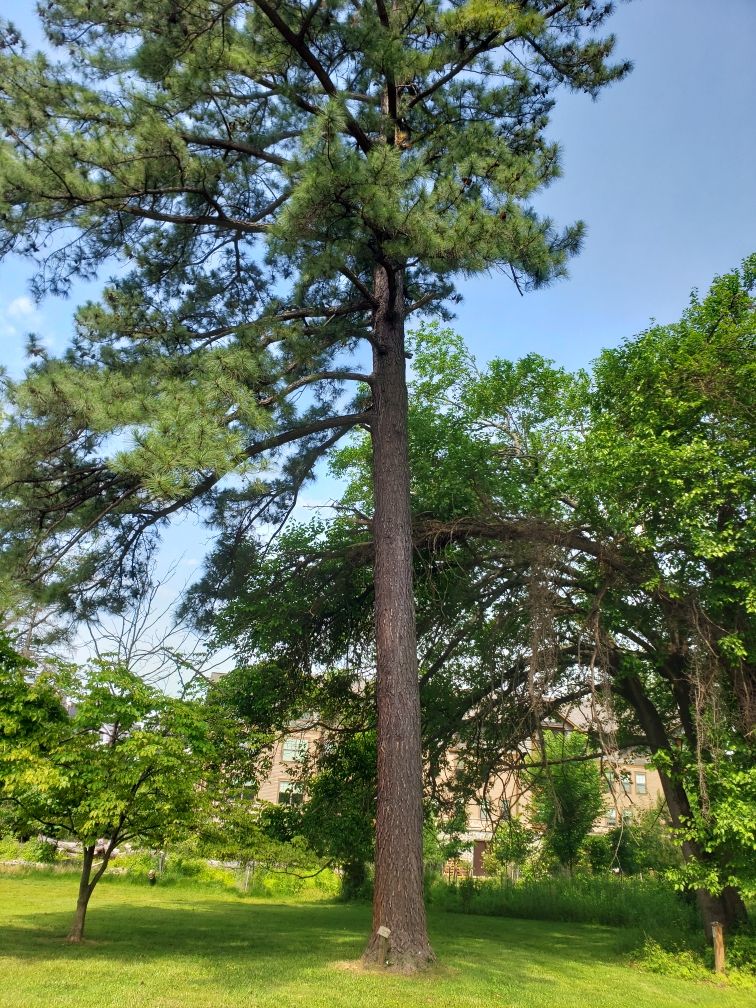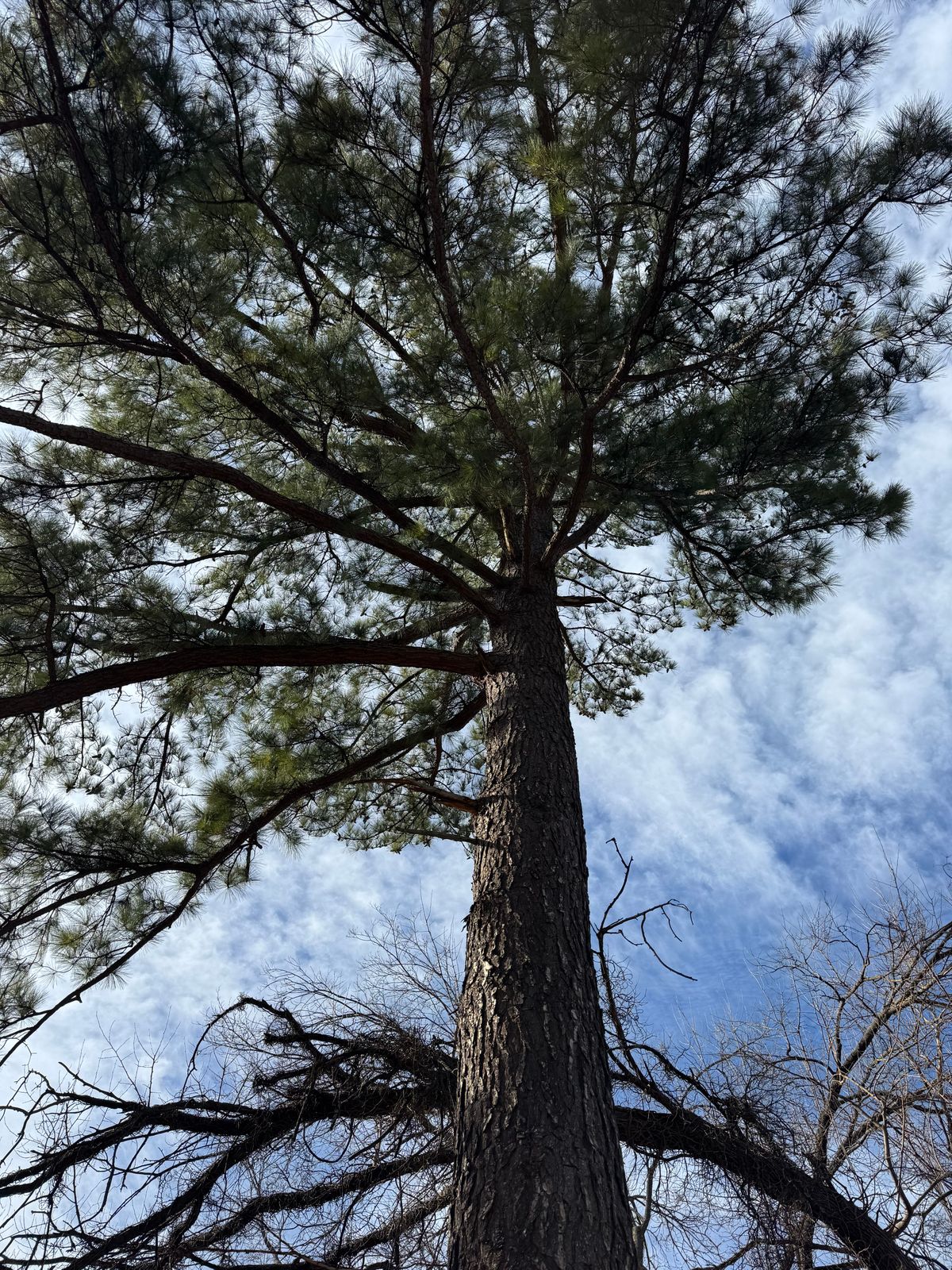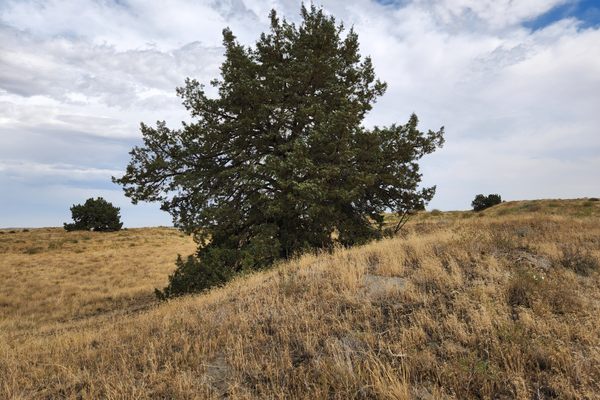About
Passersby could be forgiven for overlooking the tall loblolly pine a few hundred feet south of Grosvenor Lane in Bethesda, Maryland. After all, the sole indication that it's anything more than a stately conifer is a worn wooden plaque at the base marked only with the number 12. However, this tree holds a celestial secret: it is one of the so-called "moon trees" grown from seeds carried on Apollo 14, then deposited here long before the land featured the care homes and condominiums that populate it today.
This area was once Maryland farmland—which became prime real estate after a streetcar track connected it to the District of Columbia around the turn of the 20th century. The streetcar track survives today as the Bethesda Trolley Trail, running just west of the moon tree. In 1913, Gilbert and Elsie Grosvenor purchased over a hundred acres between the streetcar line and Rockville Pike, christening the estate "Wild Acres" and making it their summer home.
The Grosvenors were significant figures: Gilbert Grosvenor was the first full-time editor of National Geographic magazine and later president of the National Geographic Society, while Elsie Bell Grosvenor was the daughter of telephone inventor Alexander Graham Bell, who was himself heavily involved in the National Geographic Society, and an active proponent of women's suffrage. In 1928, the Grosvenors built a Tudor Revival mansion as their year-round home.
After the deaths of Gilbert and Elsie Grosvenor in the 1960s, the Grosvenor family chose to sell the estate, but who would buy an aging mansion whose grounds were now encroached on by Interstate 270 and the new Capital Beltway? The surprising purchaser was the nascent Renewable Natural Resources Foundation (RNRF), a coalition of organizations committed to conservation and resource management. One of the member organizations of the RNRF, the Society of American Foresters, received a massive $500,000 bequest (more than $3.5 million today) which allowed them to purchase the old Grosvenor mansion in 1973 and renovate it into a splendid headquarters office.
The SAF decorated the mansion with wood paneling, planted the grounds with various trees relevant to forestry, and renamed it the Gifford Pinchot Forestry Building after the organization's founder. It was a transformation that one imagines Gilbert Grosvenor, who helped draft the legislation to create the National Parks Service and provided funding to secure the preservation of the Giant Forest, would have approved of.
At the same time as the SAF was searching for its new home, another organization founded by Gifford Pinchot was making a brief foray into space. When Colonel Stuart Roosa, a former US Forest Service smoke jumper, was selected as Command Module Pilot for Apollo 14, his old colleagues contacted him about the possibility of carrying seeds into space. The fruit of this effort was a joint NASA/USFS project which saw Colonel Roosa carry hundreds of seeds from five different tree species into lunar orbit in his personal kit. After returning to Earth, the seeds were germinated at Forest Service stations and distributed as gifts to various institutions, municipalities, forestry organizations, and dignitaries. On September 30, 1975, the 75th anniversary of the SAF, one of these saplings was planted at the dedication of the Gifford Pinchot Forestry Building.
In the decades since, the sapling matured into a sizable tree and was at some point marked stop number 12 on a self-guided tour of the Pinchot Building grounds. The population of Montgomery County grew as well, almost doubling between 1975 and 2020. In the 2010s, development again encroached on what remained of Wild Acres, with townhouses and an assisted living facility replacing tracts of woods surrounding the old mansion. In 2020, the SAF moved to downtown DC in search of more modern and convenient office space, and the Pinchot Building was sold to cancer nonprofit Hope Connections for Cancer Support and rechristened the W. Scott Funger House.
Today, the moon tree remains one of the few remnants of the site's century as a center of conservation and forestry. If it can survive the rapid development of Montgomery County, the moon tree may bear witness to many years to come—loblolly pines can live up to 300 years.
Related Tags
Know Before You Go
The moon tree is located in a clearing just off the westernmost extent of Laureate Way, northwest of the old mansion. Look for a tall conifer with a small wooden plaque at the base and no branches until halfway up the trunk.
Community Contributors
Added By
Published
June 27, 2024
Sources
- https://nssdc.gsfc.nasa.gov/planetary/lunar/moon_trees/moon_tree_sycamores.html
- https://nssdc.gsfc.nasa.gov/planetary/lunar/moon_trees/bethesda_tree.html
- http://www.montgomeryplanningboard.org/agenda/2008/documents/20080731_hpc_staff_report_042008_print.pdf
- https://www.nps.gov/parkhistory/online_books/sontag/grosvenor.htm
- http://www.montgomeryplanningboard.org/agenda/2008/documents/20080731_wild_acres_selfguidedtour_resources_print.pdf
- https://nssdc.gsfc.nasa.gov/planetary/lunar/moon_tree.html































